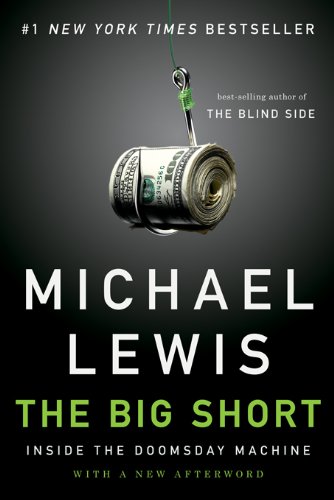

This article is an excerpt from the Shortform summary of "The Big Short" by Michael Lewis. Shortform has the world's best summaries of books you should be reading.
Like this article? Sign up for a free trial here .
What is specialty finance? What does it offer, and how is it risky? Did specialty finance loans contribute to the 2008 financial crisis?
Specialty finance is the euphemistic name of financial industries that provide financial products and services to the least-creditworthy Americans, people who wouldn’t be able to get a loan from a traditional bank.
Learn how the industry of specialty finance became lucrative and how its preying on uncreditworthy Americans contributed to the 2008 financial crisis.
The Origins of Specialty Finance
In the 1980s and 1990s, a new industry, led by firms like The Money Store, was being established to provide financial products and services to the least-creditworthy Americans. It bore the characteristically euphemistic name of “specialty finance.”
The home loans issued to un-creditworthy borrowers became known as subprime mortgages. Although subprime mortgages still only represented a small fraction of the total U.S. credit market at this time, they received a boost from the nation’s growing income inequality. A more skewed income distribution created more and more potential subprime borrowers.
The Money-Making Power of Specialty Finance
Although giving people with low credit loans seems like a nice thing to do, it was also lucrative. Specialty finance lenders weren’t being altruistic and giving people a second chance to show they could pay off their mortgages.
Specialty finance lenders were interested in packaging these mortgages and selling the bundle off as a mortgage-backed security. Buyers of mortgage-backed securities at this time weren’t concerned about default: they were worried about being paid back too quickly, when interest rates were low and their profit wasn’t as big.
This whole structure created a perverse incentive: mortgages made to un-creditworthy borrowers could actually be worth more than mortgages made to qualified borrowers. If your biggest fear as an investor in mortgage-backed securities was that you’d be repaid too early, the last thing you wanted to see in your portfolio was a bunch of financially secure, stable, low-risk mortgages. You wanted high-risk mortgages that stood little chance of being repaid early. Such borrowers wouldn’t qualify for refinancing that would enable them to pay off their mortgages when interest rates fell. They would instead be on the hook for the entire life of the mortgage—making them the ideal borrowers for mortgage-backed security investors.
The Problem With Specialty Finance
Specialty finance lenders could, therefore, make mortgage bonds more attractive by filling them with subprime mortgages. While uncreditworthy borrowers were grateful to the specialty finance lender for giving them a loan, the specialty finance lender was actually depending on the borrowers not being able to pay off their mortgages.
Specialty Finance and Subprime Mortgages
Subprime mortgage loan originators were happy to issue loans to almost anybody. Bad credit score? No problem! No income? Nothing to worry about! Past history of delinquency and/or foreclosure? Everyone deserves a second chance!
Home prices seemed to be going up and up with no end in sight. Indeed, the U.S. was living through a period in which the residential housing market had been on a general upward trend since the end of World War Two. The most secure, rock-solid investment appeared to be in homes. For this reason, specialty finance lenders were largely unconcerned with the risk of default. With the price of their homes always rising, borrowers would always be able to refinance easily. Refinancing simply meant using the equity in one’s home as a form of collateral to obtain a new loan. With this cash, people could pay their original mortgages (thus eliminating the possibility of default) and just take on new debt. It was a way to use a home as a piggy bank, a source of easy cash for over-extended borrowers.
And even if a few borrowers failed to make their mortgage payments on time or couldn’t refinance and obtain a new loan, the specialty finance lenders would simply take back the house and issue a new mortgage to a new homeowner at an even higher principal, or money owed to the lender.
Moreover, the specialty finance lenders weren’t keeping the loans on their books. Through mortgage bonds, the loans they had issued to risky borrowers could be bundled, packaged, and sold off to other investors. Any risk of default would be their problem. These incentives contributed to a widespread degradation of lending standards across the mortgage industry. The resulting defaults and foreclosures were major contributors to the 2008 financial crisis.
———End of Preview———

Like what you just read? Read the rest of the world's best summary of "The Big Short" at Shortform . Learn the book's critical concepts in 20 minutes or less .
Here's what you'll find in our full The Big Short summary :
- How the world's biggest banks contributed to the 2008 financial crisis, greedily and stupidly
- How a group of contrarian traders foresaw the bubble popping, and made millions from their bets
- What we learned from the 2008 crisis - if anything






